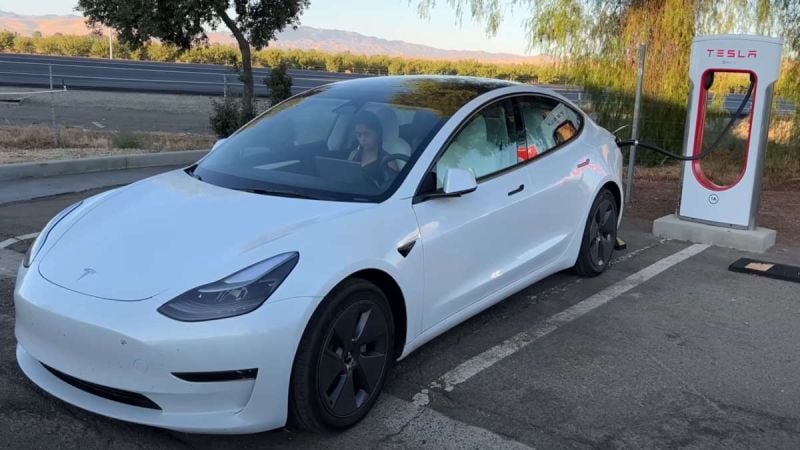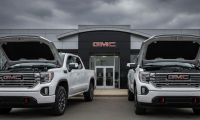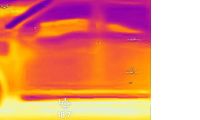Standard Range or Long Range Model 3?
I have had a standard range Model 3 for just over 2 months now. I've been enjoying this vehicle, but there is also an option to have a long range Model 3. Which is best?
There are two key differences between these vehicles. The standard range Model 3 has LFP batteries. This is a primary iron cathode battery -vs- the long range Model 3 which has a primary nickel based battery. What does this mean?
It means that the standard range Model 3 can be charged to 100% regularly - and Tesla even suggests this. Generally, to preserve the battery, you don't want to charge a nickel based battery to 100%. The LFP battery degrades much slower and are rated to last twice as long as the long range Model 3.
The iron phosphate degrades slower and that means you will keep much more of the promised range for a long period of the vehicle's life. You can charge to 100% regularly without degrading the battery nearly as much as a nickel based battery. It's harder for Tesla to know how much battery is in the LFP battery, so Tesla wants you to charge to 100% for the battery management system to calibrate.
For daily charging in a long range Model 3, you want to go to about 80% regularly, and that gets you about 280 miles per day, which isn't that far off from the 100% RWD Model 3 at 272 miles. Daily driving is very similar between both vehicles. And the long range Model 3 degrades quicker than the iron phosphate batteries.
More standard and long range discussion
With a gas car, you get low on gas and you simply find a gas station and fill up. In order to maximize trip time, batteries don't quite work this way. Electrons will always pour into a vehicle grade battery much faster when the state of charge is low. It's not time efficient when the battery is fuller to charge it. You will likely not go below 10% ever in your Tesla battery's vehicle, whether it be LFP or long range.
Tesla has made it easy to charge your vehicle. When you put in a Tesla super charger in your navigation system, Tesla will warm up the battery, called pre-conditioning, to make the charge happen faster. Tesla will also plan routes for a road trip for you and you will generally only charge to about 80% in most cases, unless you are on a long road trip.
The long range Model 3 is about $11,000 more than the standard range Model 3 right now. That also factors into the decision. The long range Model 3 has a higher performance battery and two motors. The long range Model 3 can have more energy in the battery. The long range can charge faster by having the ability to get more electrons in the battery.
The standard range Model 3 RWD is the most efficient vehicle in the world. It charges at a peak of 170 kWh at a super charger. If you are at a v2 super charger, it won't matter if you have a RWD Tesla Model 3 or a long range Model 3. It's a big decision. The long range having more range sounds good, but in reality, the ability to charge to 100% and having far less battery degradation is a big win for the Model 3 RWD.
For me personally, the Model 3 RWD being about $11,000 cheaper and being able to charge to 100% and having a much longer lasting battery were the big wins for me. When I owned my last car, I had it for 14 years and for this Tesla, I plan on having it a long time.
Which Tesla would you get - the Model 3 RWD or the Model 3 long range?
Leave your comments below, share the article with friends and tweet it out to your followers.
Jeremy Johnson is a Tesla investor and supporter. He first invested in Tesla in 2017 after years of following Elon Musk and admiring his work ethic and intelligence. Since then, he's become a Tesla bull, covering anything about Tesla he can find, while also dabbling in other electric vehicle companies. Jeremy covers Tesla developments at Torque News. You can follow him on Twitter or LinkedIn to stay in touch and follow his Tesla news coverage on Torque News.












Comments
So much misinformation in
Permalink
So much misinformation in this article. Long range can charge at 250 kwh, and on board max at 11.5 vs 7.8 for standard. Not to mention longer warranty mileage wise. Author is biased for the standard range, obviously. Didn't mention ONE pro to the long range especially the AWD aspect. Resale you will do FAR better with the long range as well.
SR can also charge at 11.5
Permalink
In reply to So much misinformation in by Jeremy (not verified)
SR can also charge at 11.5
Thanks for this. Was…
Permalink
Thanks for this. Was deciding between a 2021 Long Range with 63,000 km and a 2023 Standard Plus with 4,000km for about the same price. Ended up going with the Standard Range. You miss out on the slightly quicker performance (0-100 in 4.4 secs for the long range) and the AWD, but using LFP batteries which doubles the life/number of times they can be charged - and to 100% charge, that's a plus.